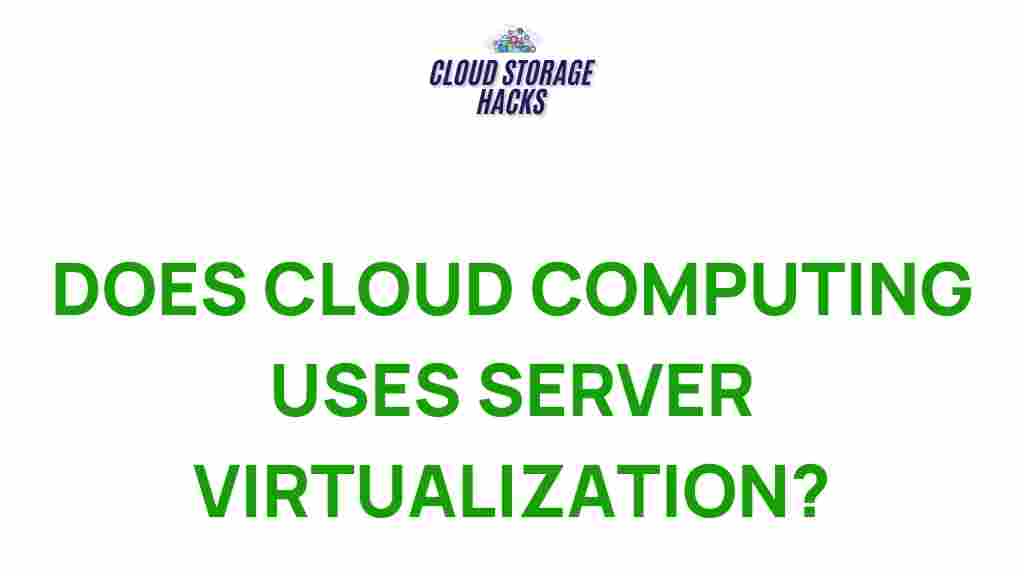Cloud Computing: A Revolution in IT Infrastructure
In recent years, the world of information technology has experienced a dramatic shift, with the rise of cloud computing and server virtualization being at the forefront of this transformation. Both of these technologies have drastically altered how businesses manage their IT infrastructure, making it more scalable, flexible, and cost-effective. But what is the relationship between cloud computing and server virtualization, and why is it so important for businesses today?
In this article, we will delve deep into the connection between cloud computing and server virtualization, exploring how they complement each other to provide a powerful foundation for modern IT systems. Whether you are a tech enthusiast, an IT professional, or a business owner looking to optimize your infrastructure, understanding this relationship is crucial for navigating the evolving digital landscape.
The Role of Cloud Computing in Modern IT
Cloud computing refers to the delivery of computing services—such as storage, processing, and networking—over the internet (the cloud) instead of through traditional on-premises infrastructure. By leveraging the power of the cloud, businesses and individuals can access scalable resources without the need to invest heavily in physical hardware. The flexibility and scalability of cloud services have made them a cornerstone of modern IT operations.
Cloud computing typically comes in three main models:
- Infrastructure as a Service (IaaS): Provides virtualized computing resources over the internet. Examples include services like AWS, Microsoft Azure, and Google Cloud.
- Platform as a Service (PaaS): Offers hardware and software tools to developers to build and manage applications. Examples include Google App Engine and Heroku.
- Software as a Service (SaaS): Provides software applications over the internet on a subscription basis. Examples include Google Workspace and Microsoft 365.
The beauty of cloud computing lies in its ability to scale resources dynamically based on demand. This is achieved by utilizing advanced technologies like server virtualization, which allows IT resources to be abstracted and allocated more efficiently. But how exactly do cloud computing and server virtualization work together to provide such a robust solution?
Server Virtualization: The Backbone of Cloud Infrastructure
Server virtualization is the process of creating multiple virtual instances of a physical server. This is done by using a hypervisor, a software layer that separates the physical hardware from the operating system and allows multiple virtual machines (VMs) to run on a single server. Each VM operates as if it is an independent server, with its own operating system, applications, and resources.
Server virtualization brings several key benefits to the table:
- Improved resource utilization: By running multiple virtual machines on a single physical server, businesses can maximize their hardware resources and avoid underutilized servers.
- Cost savings: Server virtualization reduces the need for physical hardware, which in turn lowers both capital and operational expenses.
- Flexibility and scalability: Virtual machines can be easily created, migrated, or destroyed, allowing businesses to respond quickly to changing demands.
- Enhanced disaster recovery: Virtual machines are easier to back up and restore, ensuring minimal downtime in the event of a hardware failure.
When integrated with cloud computing, server virtualization enables cloud providers to deliver scalable, on-demand resources to their clients. The combination of these two technologies has revolutionized the way businesses manage and deploy their IT infrastructure.
How Cloud Computing Leverages Server Virtualization
Cloud providers use server virtualization to deliver highly flexible and scalable services to their customers. Here’s how cloud computing and server virtualization work together:
- Dynamic Resource Allocation: Server virtualization allows cloud providers to allocate virtualized resources (such as CPU, RAM, and storage) dynamically to meet the needs of customers. This enables businesses to scale up or down easily based on their usage patterns.
- Multi-Tenant Architecture: Virtualization allows cloud providers to run multiple instances of VMs on the same physical hardware. This multi-tenant model enables providers to maximize the utilization of their infrastructure and offer affordable services to a wide range of customers.
- Cost Efficiency: By running multiple virtual machines on fewer physical servers, cloud providers can reduce operational costs, and these savings are passed on to customers in the form of lower pricing.
Ultimately, the synergy between cloud computing and server virtualization allows for a more efficient, scalable, and cost-effective IT infrastructure. It is this relationship that powers many of the world’s most successful cloud platforms.
Step-by-Step Process of Virtualization in Cloud Computing
To better understand the relationship between these two technologies, let’s break down how server virtualization is typically implemented within a cloud computing environment.
Step 1: Physical Server Setup
The process begins with a physical server that is equipped with enough processing power, memory, and storage to handle multiple virtual machines. This server must be properly configured to support virtualization, including the installation of the hypervisor software.
Step 2: Hypervisor Installation
The next step is to install a hypervisor on the physical server. The hypervisor is a critical piece of software that enables the virtualization of resources. There are two main types of hypervisors:
- This article is in the category Guides & Tutorials and created by CloudStorage Team
